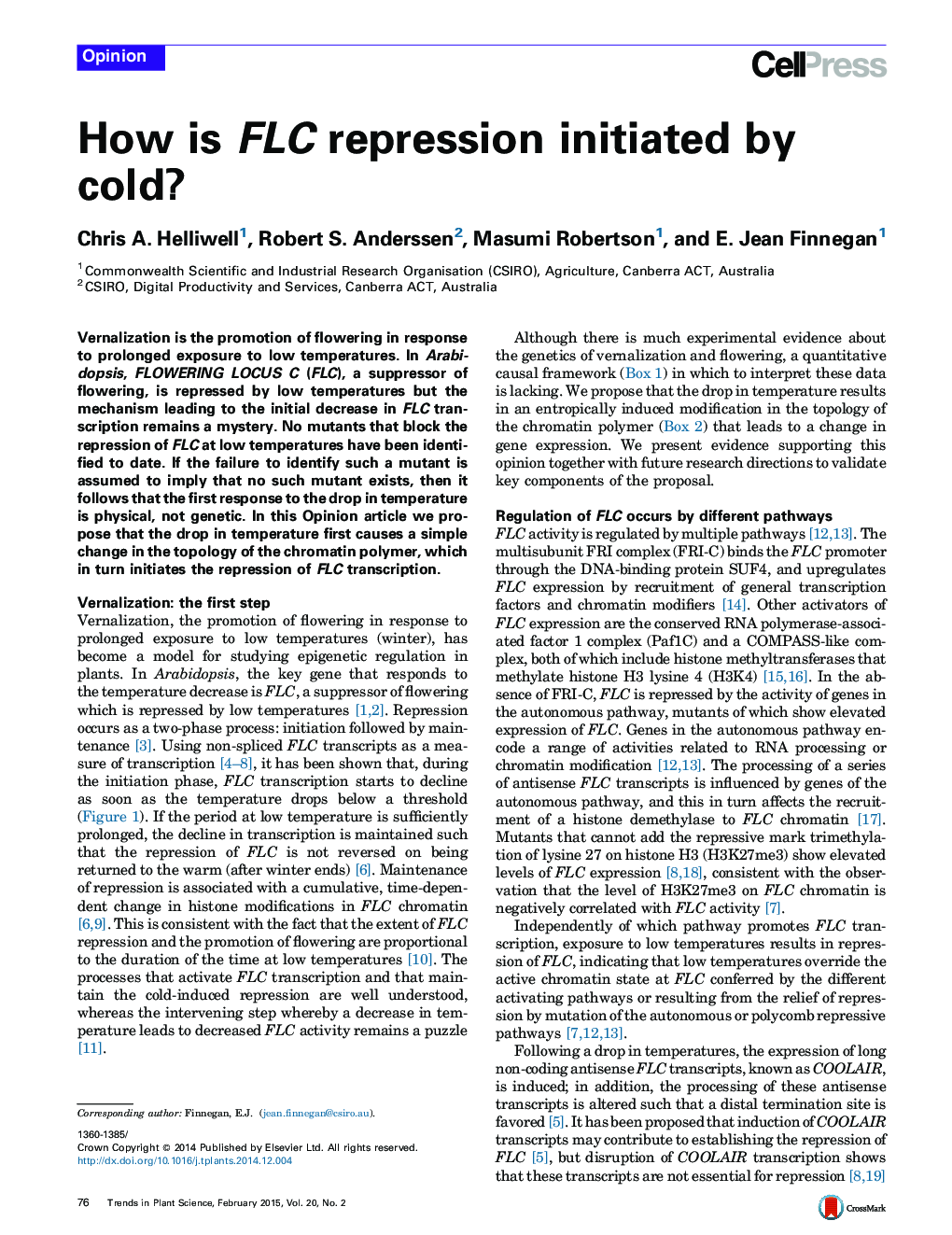| Article ID | Journal | Published Year | Pages | File Type |
|---|---|---|---|---|
| 2826017 | Trends in Plant Science | 2015 | 7 Pages |
•Vernalization is stimulated by exposure to low temperatures but the triggering mechanism remains obscure.•We address the longstanding question of how the repression of FLOWERING LOCUS C (FLC) is initiated by low temperatures.•An entropically-induced reorganization in chromatin topology in response to the cold may cause FLC repression.•Consideration of the physical properties of chromatin can provide new insights into other temperature-dependent changes in gene expression.
Vernalization is the promotion of flowering in response to prolonged exposure to low temperatures. In Arabidopsis, FLOWERING LOCUS C (FLC), a suppressor of flowering, is repressed by low temperatures but the mechanism leading to the initial decrease in FLC transcription remains a mystery. No mutants that block the repression of FLC at low temperatures have been identified to date. If the failure to identify such a mutant is assumed to imply that no such mutant exists, then it follows that the first response to the drop in temperature is physical, not genetic. In this Opinion article we propose that the drop in temperature first causes a simple change in the topology of the chromatin polymer, which in turn initiates the repression of FLC transcription.
